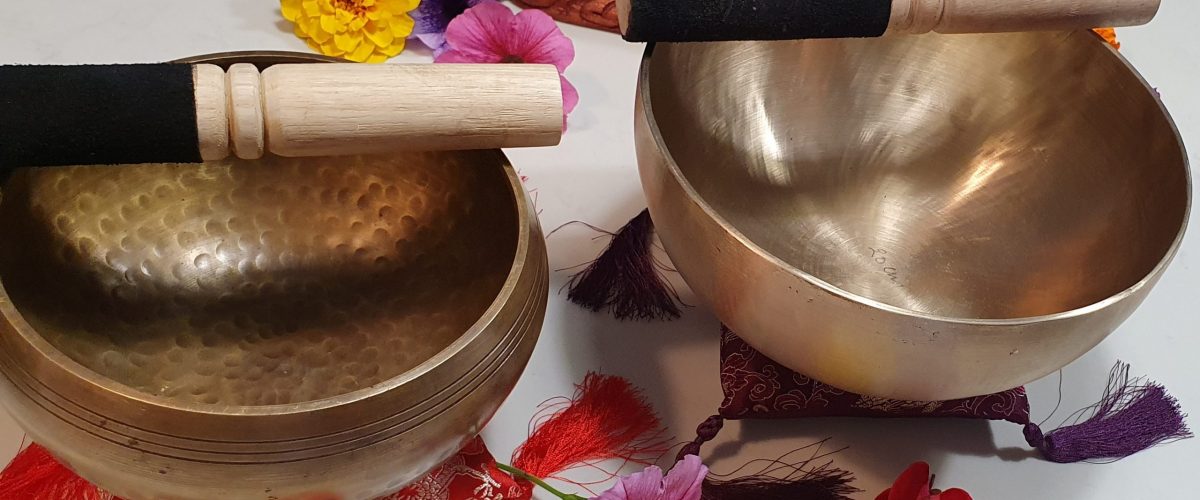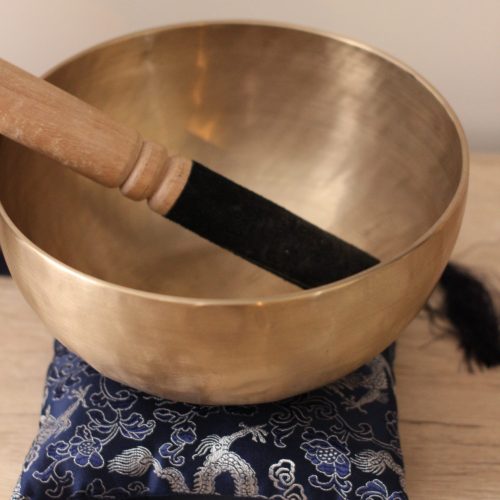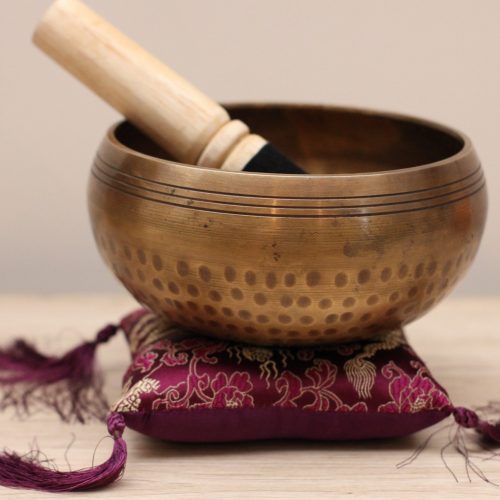Healing Sounds of Tibetan Singing Bowls

Living in an extra-ordinary time of Covid-19 is putting so much of stress on our body and adversely affecting our well-being. Good health is not defined by only physical means but also comprises emotional and spiritual health. The holistic approach in psychotherapy was to connect mind, body and spirit to attain total well-being [1].
Music is the oldest forms of spiritual medicine and will be the medicine of the future. Healing sounds include scientific and spiritual aspects. Waves of sound can change molecular structure and can resonate our body and brain [2]. Healing practices using sound and music goes back to historical times of advanced civilization where our ancestors believed that music could support wellness. In last 20 years, the interest has been increased in music therapy or sound healing that involves acoustical vibrations on physical, physiological and neural activity of a person [3]. There are some instruments used for healing such as singing bowls, especially those from Tibet. Tibetan singing bowls are originated from Himalayan fire cults of the 5th century BC and have been used in religious ceremonies and meditation [4].
Tibetan singing bowls are made from seven “holy” metals (alloys of copper, tin, zinc, iron, silver, gold and nickel) and are extraordinarily vibrant and the rich sound is produced by striking a mallet and rubbing it to the rim of the bowl [5]. It is generally recognized that it was created specifically to elicit tones for healing and ritual. The sounds produced by these singing bowls calm the nervous system (brain), increase mental awareness, and promote relaxation [6]. Vibrations of singing bowl have physiological effect on our body and cause light internal massage to cells and these vibrations can transform the wavelengths and create harmonic frequency in synchronization. EEG patterns of brain were observed during the meditative state using singing bowls and showed alpha waves were produced by the brain. In another study, brain imaging EEG, MRI and PET scans showed that the harmonic overtones created by spiritual and meditation practices can influence the para-sympathetic nervous system and promote healing, spiritual awareness and reduce stress [7].
An observational study examined the effects of Tibetan singing bowls meditation on mood, tension, anxiety, physical pain, and spiritual well-being in sixty-two (62) participants and showed significant reduction in tension, anxiety, fatigue, anger, depressed mood and increase in spiritual well-being. The researchers derived the mechanism that sound of singing bowl might have reduced stress hormones with promotion of relaxation in mind and body [8].
Another study with 12 metastatic cancer patients who attended sessions of Tibetan singing bowls showed reduction in anxiety, arousal, involuntary mental activity and stress [9]. Though we do need more studies to investigate the effects [10] but as we have known now that many traditional practices did have some meaning in our life and were positively associated with health, therefore, it would be a good practice to start using this healing sound practice of meditation using Tibetan singing bowl. Personally, I do love my meditation of 10 to 15 minutes of this singing bowl, it refreshes my mind!
Refrences:
- Latorre MA (2000) A holistic view of psychotherapy: Connecting mind, body, and spirit. Perspectives in psychiatric care 36: 67.
- Goldman J (2002) Healing sounds: The power of harmonics: Simon and Schuster.
- Brown CG (2020) Tibetan Singing Bowls. American Religion 1: 52-73.
- Terwagne D, Bush JW (2011) Tibetan singing bowls. Nonlinearity 24: R51.
- Inácio O, Henrique LL, Antunes J (2006) The dynamics of tibetan singing bowls. Acta acustica united with acustica 92: 637-653.
- Crowe BJ, Scovel M (1996) An overview of sound healing practices: Implications for the profession of music therapy. Music Therapy Perspectives 14: 21-29.
- Humphries K (2010) Healing Sound: Contemporary Methods for Tibetan Singing Bowls.
- Goldsby TL, Goldsby ME, McWalters M, et al. (2017) Effects of singing bowl sound meditation on mood, tension, and well-being: An observational study. Journal of evidence-based complementary & alternative medicine 22: 401-406.
- Bidin L, Pigaiani L, Casini M, et al. (2016) Feasibility of a trial with Tibetan Singing Bowls, and suggested benefits in metastatic cancer patients. A pilot study in an Italian Oncology Unit. European Journal of Integrative Medicine 8: 747-755.
- Stanhope J, Weinstein P (2020) The human health effects of singing bowls: a systematic review. Complementary Therapies in Medicine: 102412.
https://youtu.be/n_QdYjLVASE

